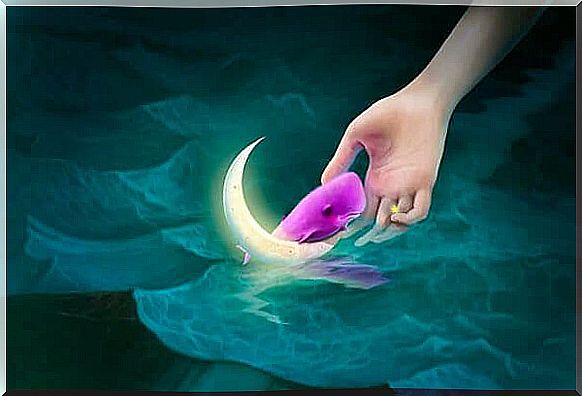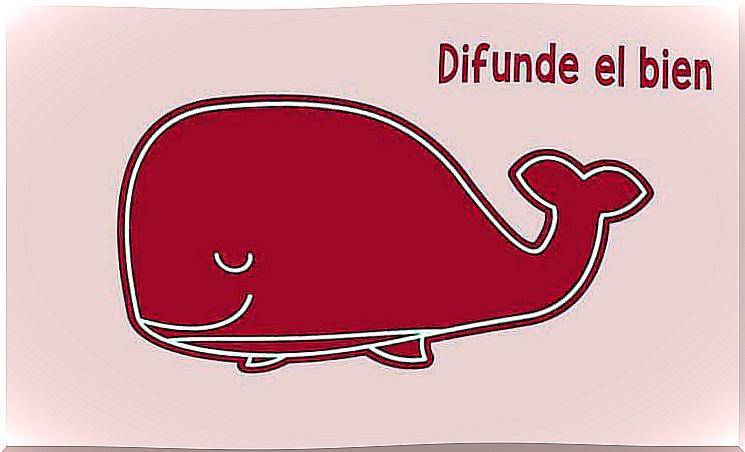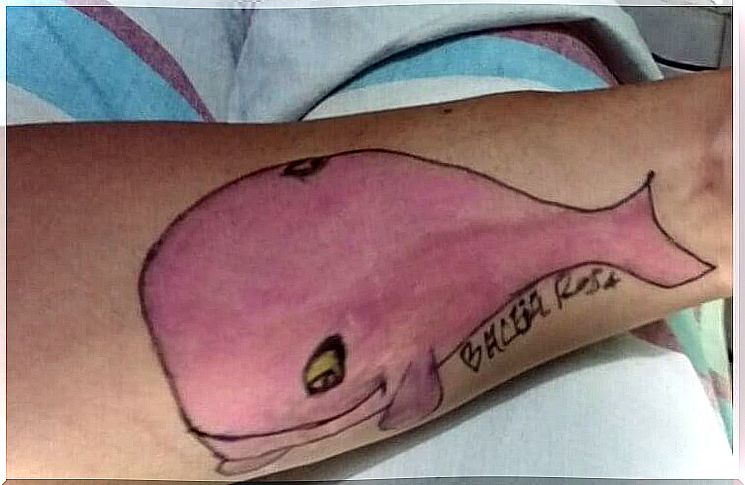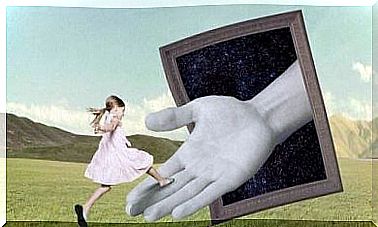What Color Do We Want The Whale To Be: “blue Or Pink”?

Nobody wants to commit suicide. In fact, most people who take this step act out of the conviction that they have no other, more acceptable way out. It’s the last option, your last resort to escape a life that causes pain. It is very likely that the macabre game of the “blue whale” has not been understood by most people. But there is something we cannot lose sight of. Today, hundreds of children and teenagers are sailing in the oceans of loneliness, sadness and vulnerability. These are people who need help.
Maylen was 13 years old and lived in a small village in Colombia. Her life, apparently, was normal, not unlike that of any other teenager her age. A few days before committing suicide by hanging herself with a ribbon, the girl asked her mother if blue whales existed. “Yes, there are and there should be few left. They are on the verge of extinction.” replied Mrs. Villamizar, unable to imagine what her daughter had in mind.
Maylen was not the only one to take this step. About 130 young people around the world performed the 50 degrading tests of this “game”. A game that is won with a “last move”, that of taking one’s own life (and if this is not done, there is another crime here, the game warns that, by knowing the user’s IP, third people can murder their friends and family).
Many can say that the world of social networks, forums and these groups constituted in the intangible network of new technologies has only negative consequences. However, behind all this there is a reflection that this game imposes on us: the world, believe it or not, is full of blue whales. Precious and, at the same time, vulnerable beings represent those atavistic universes that we are unconsciously or deliberately neglecting: loneliness, fear, insecurity, the feeling of talking to a wall…
It’s time to make choices. The opposite of the “blue whale” is the “pink whale”, a wonderful initiative that came about in reaction to the game that is taking the lives of many young people in a lamentable way.

The blue whale seeks to get out of a life that causes pain
Interestingly, the name of this game has very little to do with the dazzling animal it’s based on. The blue whale is the biggest animal on our planet. They are graceful swimmers and travel the ocean at high speed. In turn, they are one of the noisiest animals on the planet. They are capable of emitting different pulses and grunts that are heard over 1,500 kilometers away. They are possibly one of nature’s most fascinating creatures.
However, our “blue whales”, those that swim on the asphalt floor and in the world of social networks, are silent creatures, those that go unnoticed. Furthermore, they are characterized by psychological vulnerability and a lack of stable reference figures. Faced with the repeated question of how a 12, 13 or 18 year old decides to step into this game, in which things as humiliating as painful are asked, we have to take into account several aspects that will help us to understand this a little better. phenomenon.

Why does a young person decide to participate in this game?
The blue whale game allows children and teenagers to create a personality in a world in which they feel invisible, in which many cannot find their place, in which nothing seems to evoke a sense of identification. Each self-flagellation, each disconcerting test overcome is an achievement, it is a demonstration of courage because they faced pain, fear, indecision… All of these are “conquests” that they publish with “pride”, so as to obtain psychological reinforcement and a motivation. The motivation to continue.
In turn, the fact of joining this type of game makes them feel that they are part of a project, from which a commitment is born. We cannot forget that adolescence is a phase of searching, in which if the young person does not have a consolidated group of friends or a family with an active bond and as a safe reference, this girl or boy will only seek to defend themselves from society whichever way it is (which sometimes ends up being the least successful) .
Ultimately, the Blue Whale game offers a journey of cruel challenges to these children and teenagers. Challenges to try to recover self-esteem, without knowing that they are at the mercy of the sadistic and cruel whims of the people behind this game.
Blue whales can change into pink whales
It is necessary to wake up and realize that around us more than one blue whale is sailing. However, we must be careful not to scare them, not to get mad at them for being the way they are, for feeling what they feel or for having some curiosity about this game. Because if we punish, judge or mock, the blue whale will move away from us. We must guide her with assertiveness, proximity and intelligence so that, with our help, she can transform into a pink whale.
As the WHO explains to us, about 4% of the population suffers from depression and, each year, more than 800,000 people choose to take their own lives because, for them, it is the only option to stop suffering. A large part of this number are young people aged between 13 and 25 years old. In addition, approximately 16 million people are known to self-mutilate, especially teenagers.
We therefore need to approach creation and education in another way. We need more tools in educational centers and, without a doubt, more initiatives such as “Baleia Rosa”, aimed at building a positive attitude through 50 tests that are as assertive as they are fun. In it, each step is a principle of life, not an end of sadness.

Prevention and supervision
On the other hand, the work of families is vital in these cases and, therefore, it is necessary that we are aware of these simple guidelines every day:
- Parents must show absolute emotional availability when listening to their children.
- The current economic crisis is causing, in many countries around the world, families do not have as much time as they would like to spend with their children. However, the little time they have must be of quality, always building an adequate complicity and proximity to the little ones.
- It is necessary to provide small opportunities and tools to build meaningful relationships with their peers, always avoiding isolation.
- We must remember the need to value our children, to offer positive reinforcement so that they have strong self-esteem.
Last but not least, we need to pay attention to our teenagers’ mood and behavior changes. In turn, regularly supervising what they do and share on social media is essential to avoid situations like the ones that are happening today, and closer to us than we could imagine.









